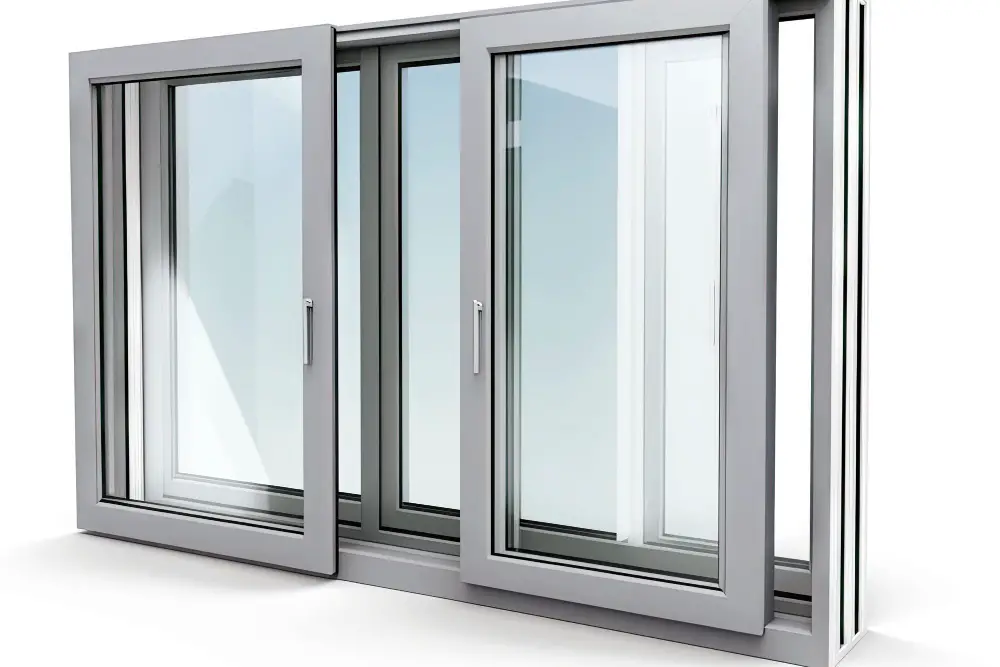These are the most important and up-to-date statistics of the windows and doors industry.
The windows and doors industry has shown significant growth in recent years, with the global market size exceeding USD 153 billion in 2020. The market is predicted to experience a compound annual growth rate (CAGR) of 6.2% from 2021 to 2027, primarily due to rising construction and infrastructure development activities.
Material-wise, uPVC windows and doors hold the largest market share at over 35% in 2019, with an expected CAGR of 5.8% during the 2020-2027 period. The increase in demand for sustainable, energy-efficient, and cost-effective products has contributed to the growing popularity of uPVC materials in the industry.
Market Overview

The global windows and doors market has experienced significant growth in recent years. In 2020, the market size exceeded USD 153 billion, and it is projected to expand at a compound annual growth rate (CAGR) of over 6.2% from 2021 to 2027[1]. This growth can be attributed to the rising infrastructural development activities and an increase in renovation projects worldwide.
Within the United States, the fenestration market was estimated to be around $12.4 billion in 2021 according to IBISWorld[2]. In a separate study, Freedonia, a market research firm in Cleveland, Ohio, estimated that by 2026, the window and door industry would hit $35.9 billion[3]. These estimates highlight the growing demand for windows and doors in both residential and commercial sectors.
Some key factors contributing to the growth of the windows and doors market include:
- Increase in new construction activities
- Renovation of existing structures
- Rising population driving demand for residential and commercial buildings
In 2021, the window and door frame market was valued at USD 107.7 billion, and it is estimated to exhibit a 5.7% CAGR from 2022 to 2028[1]. The increasing new construction activities and rising demand for energy-efficient solutions contribute to the growth of this segment.
Key Statistics and Trends
In recent years, the global windows and doors market has experienced significant growth. As of 2020, the market size exceeded USD 153 billion, and it is projected to expand at a Compound Annual Growth Rate (CAGR) of over 6.2% from 2021 to 2027[1].
This growth can be attributed to various factors, such as the rise in infrastructural development activities and increasing demand for renovation projects. In addition, technological advancements in the materials used for manufacturing windows and doors have also played a critical role in this growth. For instance, energy-efficient products and improved performance features have become more popular among consumers.
Here are some key trends shaping the industry:
- Material preference: Materials such as uPVC and aluminum are gaining popularity due to their durability, ease of maintenance, energy efficiency, and aesthetics[1].
- Smart windows and doors: The integration of smart technologies, including sensors, and advanced security features is gaining more attention in the windows and doors market.
- Energy efficiency: Growing consumer awareness about energy conservation has led to a surge in demand for energy-efficient windows and doors.
- Customization: The ability to customize windows and doors based on individual preferences and specific requirements is another trend that’s expected to drive market growth in the coming years.
As the market continues to grow, competition among manufacturers and suppliers will likely intensify. To stay ahead, industry players will need to focus on technological innovations, product differentiation, and customer service excellence.
Market Dynamics
The windows and doors industry has shown significant growth in recent years. In 2020, the global market value reached USD 153 billion, with an expected compound annual growth rate (CAGR) of over 6.2% from 2021 to 2027[1].
New construction activity has contributed to this growth, with the North America doors and windows market poised to reach revenues of over USD 67 billion by 2026[4]. Additionally, renovations and remodeling have boosted the market, with a 3% increase in skylight activity for new construction and a 4% increase in skylight activity for remodeling compared to 2019[5].
The market has been influenced by several factors, such as:
- Rising infrastructural development activities[1]
- Increasing personal disposable income leading to a shift toward aesthetically appealing designs[1]
Furthermore, industry players are taking advantage of the latest opportunities, trends, and market dynamics to drive growth and improve their competitive position.
Segment Analysis
The windows and doors industry can be segmented by material type, end-user, and geography. Material type segmentation includes wood, metal, plastic, and other materials. In terms of end-users, the market is divided into residential and commercial segments. Geographical segmentation covers North America, Europe, Asia-Pacific, Latin America, and the Middle East & Africa[6].
As of 2020, the global windows and doors market size exceeded USD 153 billion and is expected to grow at a CAGR of over 6.2% from 2021 to 2027[1]. Key drivers of this growth include rising infrastructural development activities and increasing renovation activities worldwide.
Regionally, the North American market remains a significant contributor to the global windows and doors industry. The industry growth in Europe is also noteworthy, with increasing demand for energy-efficient window and door solutions driving the market expansion.
In summary, the material types, end-users, and geographical regions contribute to the segmentation of the windows and doors market. Each segment influences the overall market growth, and understanding these factors is essential for a holistic view of the industry.
Regional Insights
The windows and doors industry experiences varying growth rates and trends across different regions. In this section, we’ll discuss some of the key regional insights drawn from recent market reports and forecasts.
In Europe, the Windows & Doors Market size exceeded USD 36.3 billion in 2020, and it is estimated to expand at over 4.5% CAGR between 2021 and 2027[7]. This growth can be attributed to increasing demand for energy-efficient solutions and growing residential construction activities in the region.
As for the global windows and doors market, it reached a size of more than USD 153 billion in 2020 and is projected to grow at a 6.2% CAGR from 2021 to 2027[1]. The growth can be credited to the rising demand for eco-friendly materials, advancements in technology, and increasing construction activities worldwide.
Moving on to specific regions, areas with higher growth rates in the windows and doors market can be observed. For instance, the Asia-Pacific region is expected to drive a significant portion of this growth, primarily due to increased investments in infrastructure development, urbanization, and rapid economic growth in countries like China and India.
Leading Companies
The windows and doors industry is the backbone of the construction and building materials sector. Leading manufacturers play a crucial role in driving overall market growth. Among the top manufacturers in the global windows and doors market are Pella Corporation, ASSA ABLOY, and JELD-WEN, Inc.
- The Andersen Corporation is a leading American manufacturer of windows, doors, and other building products. Established in 1903 by Danish immigrant Hans Andersen, the company has grown over the years to become an industry pioneer in design, innovation, and sustainability. Headquartered in Bayport, Minnesota, the Andersen Corporation operates several manufacturing facilities across the United States, ensuring top-quality craftsmanship and a commitment to eco-friendly practices. [1]
- Pella Corporation: Pella is an American company that specializes in producing innovative and energy-efficient window and door solutions. They have a broad product portfolio and cater to both residential and commercial construction projects with products ranging from aesthetic wooden doors to high-performance glass windows. Their extensive offering and commitment to quality have established them as a major player in the industry.
- ASSA ABLOY: Headquartered in Sweden, ASSA ABLOY is a global leader in providing door and window opening solutions. The company offers a wide range of products and services, including entrance automation systems, security doors, and smart lock technology. They operate in both residential and industrial sectors, offering a diverse set of options to meet their customers’ needs [1].
- JELD-WEN, Inc.: Based in the United States, JELD-WEN is a well-known manufacturer of high-quality windows, doors, and related components. They provide products for residential, commercial, and institutional applications, with a focus on energy efficiency and durability. Throughout the years, the company has earned a reputation for excellence through their dedication to innovation and customer satisfaction.
In addition to these top manufacturers, there are many other prominent companies in the windows and doors industry, such as Glass-Rite, Saudi Aluminum Industries Company, and Nawa International. Each of these companies contributes to the continuous growth and advancement of the overall market.
Summary
In summary, the windows and doors industry has experienced significant growth in recent years. The global market size exceeded USD 153 billion in 2020[1] and is projected to expand at a CAGR of over 6.2% from 2021 to 2027. This growth can be attributed to factors such as increasing infrastructural development and renovation activities.
Various sources project different market sizes for the industry by 2026. For instance, Freedonia estimates the market to reach approximately USD 42.4 billion, while Key Media suggests a figure of USD 29.3 billion based on a 4.5% growth rate per year. Regardless of the differences in projections, it’s clear that the industry is on an upward trajectory.
Technology and innovation play a vital role in the expansion of the windows and doors market. Manufacturers are continuously developing new products and designs to meet consumer demands for energy efficiency, aesthetics, and functionality. As a result, the industry is expected to maintain steady growth in the coming years, providing both opportunities and challenges for market players.





